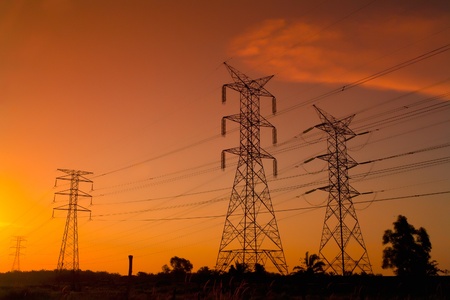Understanding Period Fatigue in the Indian Context
Period fatigue is a reality that many Indian women silently endure every month. While menstruation is a natural biological process, the physical and emotional exhaustion it brings is intensified by factors unique to India’s cultural and social landscape. Many Indian women juggle demanding roles as daughters, wives, mothers, and professionals, often prioritising family needs over their own well-being. The traditional Indian diet, rich in carbohydrates and sometimes lacking in essential micronutrients due to limited dietary diversity or cultural food restrictions during periods, can also contribute to feelings of tiredness. Furthermore, societal taboos around menstruation can make it difficult for women to seek rest or support when they need it most. Long commutes on crowded public transport, the pressures of managing household chores even during heavy flow days, and limited access to comfortable period products add layers of fatigue. Understanding these challenges is the first step towards finding energising solutions tailored specifically for women in India.
2. Why Exercise Helps: Insights from Ayurveda and Modern Science
When it comes to managing period fatigue, both Ayurveda and modern science agree that gentle movement can bring significant benefits. According to Ayurvedic wisdom, the menstrual phase is governed by Apana Vata — the energy responsible for downward flow and elimination. During this time, balance is key, and light exercises such as walking or simple yoga asanas help support the bodys natural processes without causing strain. Meanwhile, contemporary research highlights how physical activity increases endorphin levels, improves blood circulation, and alleviates mood swings associated with menstruation.
| Ayurvedic Perspective | Modern Science |
|---|---|
| Supports Apana Vata for smoother cycles | Boosts endorphins to reduce fatigue and pain |
| Encourages gentle asanas like Supta Baddha Konasana (Reclined Butterfly Pose) | Improves blood flow and oxygen delivery |
| Avoids strenuous activities to prevent energy depletion | Lowers cortisol (stress hormone) levels |
For many Indian women, incorporating culturally familiar practices such as short morning walks in the park, slow-paced Surya Namaskar (Sun Salutation), or even folk dance movements can be revitalising during periods. These activities not only resonate with traditional roots but also align with recommendations from doctors and wellness experts. By honouring both ancient traditions and scientific knowledge, you can find an exercise routine that gently recharges your body and mind through every menstrual cycle.
![]()
3. Yoga Asanas for Energy and Comfort
When it comes to managing period fatigue in India, yoga offers a gentle yet effective way to restore energy and soothe discomfort. Indian women have practised restorative asanas for generations, blending tradition with wellness. Here are two simple yet powerful poses that you can try at home or even in your hostel room.
Supta Baddha Konasana (Reclining Bound Angle Pose)
This deeply restorative asana is popular across India, from Mumbai’s fast-paced city life to the tranquil villages of Kerala. To practise Supta Baddha Konasana, lie on your back, bend your knees and bring the soles of your feet together, allowing your knees to fall outwards. You may place cushions or folded dupattas under your knees for extra support. Close your eyes and focus on breathing slowly. This pose gently opens the hips and abdomen, easing menstrual cramps and encouraging relaxation—a much-needed relief during those heavy days.
Balasana (Child’s Pose)
Balasana is a comforting pose that many Indian women turn to, especially when they feel drained or overwhelmed by period pain. Kneel on the floor, sit back on your heels, then fold forward until your forehead touches the mat. Extend your arms forward or let them rest alongside your body. Balasana helps release tension in the back and hips while calming the mind—a true blessing when dealing with mood swings and fatigue.
Cultural Tips for Practising Yoga During Periods
In Indian households, it is common to use a soft cotton mat or even a chadar for yoga practice during periods. Make sure you choose a quiet space where you feel comfortable and undisturbed. Listening to soothing bhajans or gentle instrumental music can further enhance relaxation.
Final Thoughts
These restorative asanas are easy to incorporate into daily routine and do not require any special equipment—just a little time for self-care. Embracing such mindful movement can help you navigate period fatigue with grace and renewed energy, reflecting the wisdom of Indian traditions.
4. Gentle Home Workouts that Fit an Indian Lifestyle
Finding time and space for exercise during your period can be challenging, especially when living in joint families or compact urban homes. However, simple, equipment-free exercises can easily be woven into your daily routine—even between household chores or caring for loved ones. These gentle movements help boost energy, reduce cramps, and support emotional well-being without demanding too much effort or space.
Easy At-Home Exercises for Period Fatigue
| Exercise | How to Do It | Benefits |
|---|---|---|
| Seated Ankle Rotations | Sit on a chair or bed, gently rotate each ankle clockwise and anti-clockwise for 1 minute. | Improves blood circulation and reduces swelling in legs. |
| Wall Push-Ups | Stand facing a wall, place palms on the wall at shoulder height, bend elbows to bring your chest towards the wall, then push back. Repeat 10–12 times. | Tones upper body and relieves upper back tension from daily chores like cooking or carrying groceries. |
| Knee-to-Chest Stretch | Lie down on your back (use a mat or blanket), hug one knee at a time towards your chest, hold for 10 seconds per leg. | Soothes lower back pain and eases abdominal cramps. |
| Shoulder Rolls | Sit or stand comfortably, roll shoulders forward and backward in a circular motion for 1 minute each direction. | Eases stress from long periods of sitting or repetitive activities like chopping vegetables. |
Tips for Exercising in Small Indian Homes
- Utilise corridors or verandas for walking laps or gentle stretching.
- Combine exercise with daily tasks—do calf raises while waiting for chai to brew or squats while folding laundry.
- If privacy is limited, choose exercises that can be done while sitting on the bed or floor during quiet moments.
Cultural Considerations
Remember, it’s completely normal in Indian households for women to prioritise family needs. By selecting short and adaptable workouts, you honour both your body’s needs and your family responsibilities. Even five minutes of mindful movement can make a meaningful difference in managing period fatigue.
5. Incorporating Traditional Practices: Pranayama and Mudras
Embracing Ancient Indian Wisdom for Menstrual Wellness
During your period, it’s natural to experience fatigue and emotional ups and downs. In India, women have long turned to traditional practices like pranayama (breathwork) and mudras (hand gestures) for gentle support. These techniques help channel energy, soothe the mind, and restore vitality without putting extra strain on your body.
Pranayama: Breathing Life Into Your Routine
Simple pranayama practices can be transformative during menstruation. Techniques such as Anulom Vilom (alternate nostril breathing) and Bhramari (bee breath) calm the nervous system, reduce stress, and improve oxygen flow, which in turn combats fatigue. Try sitting comfortably in a quiet corner of your home—just five minutes of mindful breathing can uplift your mood and leave you feeling refreshed.
Mudras: Harnessing Energy with Your Hands
Mudras are subtle yet powerful tools rooted in Indian culture that you can do anywhere. The Prana Mudra (life force gesture) is especially helpful for boosting energy. To practice, touch the tips of your little finger and ring finger to your thumb while keeping the other fingers straight. Hold this mudra for several minutes while focusing on your breath. Another option is the Gyan Mudra (gesture of knowledge), which supports mental clarity and emotional balance—perfect for those days when hormones feel overwhelming.
A Gentle Ritual for Everyday Strength
Combining pranayama and mudras creates a nurturing self-care ritual that honors both body and mind. These practices are deeply woven into Indian heritage and offer a sense of connection to generations of women before you. Embrace them as part of your menstrual wellness toolkit—you’ll find yourself feeling lighter, more energised, and grounded throughout your cycle.
6. Tips for Staying Motivated and Consistent
Embracing a Realistic Routine
Consistency is key when it comes to energising exercises during your period, but life in India is full of vibrant festivals, busy work schedules, and family commitments. Start by creating a flexible routine that works for you. For example, if you find mornings hectic due to family responsibilities or commute, opt for evening stretches or gentle walks after dinner. Remember, even 10-15 minutes of movement counts! Track your progress with a simple diary or app—celebrating small wins can boost motivation.
Honouring Festive Seasons and Social Commitments
India’s rich tapestry of festivals like Diwali, Holi, and Eid often brings changes in routine. Instead of skipping exercise completely, try to include light activities such as dancing during celebrations, walking while shopping for festival essentials, or engaging in family yoga sessions. These small adaptations keep you active without feeling overwhelmed or guilty about missing structured workouts.
Balancing Work and Life
Many women juggle demanding jobs and household duties. On heavy period days or during busy workweeks, choose shorter or less intense exercises—think gentle yoga, pranayama (breathing exercises), or a brisk walk around your office building. If you are working from home, use short breaks for stretching or quick desk exercises to re-energise yourself.
Seeking Support from Family Members
In Indian households, support from family can make a big difference. Share your fitness goals with your loved ones and ask them to join you for evening walks or encourage you to take out time for yourself. Involving children or elders in light activities creates bonding moments and helps everyone stay healthy together.
Cultural Mindset: Self-Care is Not Selfish
It’s common in India for women to prioritise others before themselves. Remind yourself that taking care of your health is important for the wellbeing of your entire family. Practising self-care through energising exercises not only helps manage period fatigue but also sets a positive example for those around you.
By adapting your exercise routine around cultural events, work-life demands, and with the help of your family, staying motivated and consistent becomes more achievable—and enjoyable!


